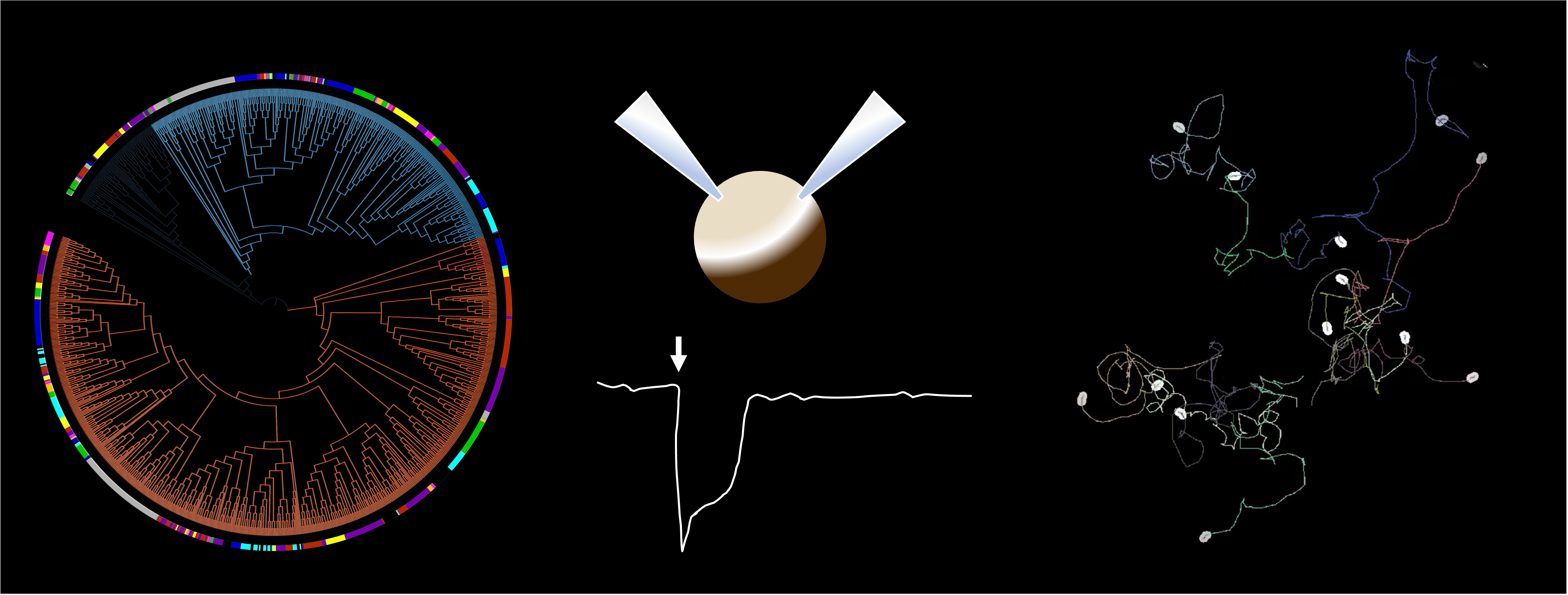
Image: Overview of project techniques (left to right): Phylogenetics, two electrode voltage clamp to characterise novel receptors, animal tracking and behavioural experiments to understand the role of receptors in vivo.
Identifying and characterising novel invertebrate ion channel receptors
Supervisor: Dr Iris Hardege
Co-supervisor: Professor Howard Baylis
Traditionally we believe that the ability to perform complex behaviour arises as the size of the brain increases. However, animals with anatomically small brains, like the nematode C. elegans, are capable of complex behaviours such as learning and maze navigation. This raises the question; how do these small networks generate behavioural complexity and are these mechanisms conserved throughout evolution?
For example, the nematode worm C. elegans, despite having just 302 neurons encodes over 100 genes for fast acting ligand gated ion channels (LGICs) which in mammals includes the fast neurotransmitter receptors nAChR and GABAARs. As well as expressing classical LGICs, worms also express many atypical receptors including inhibitory and excitatory receptors for monoamines including dopamine and serotonin. However, almost half of the genes encoding LGICs in C. elegans still remain unstudied. Recently we uncovered the extent to which other invertebrate species also encode large sets of divergent LGICs, most of which are unstudied. This project aims to characterise new LGICs from nematodes and other invertebrates.
Type of work
You will use phylogenetics to identify potential new LGICs encoding genes, as well as their evolutionary links to known LGICs genes. Next you will express these potential receptors in Xenopus oocytes and use Two Electrode Voltage Clamp (TEVC) electrophysiology to characterise their functional properties including the identity of their main ligand(s) and selectivity (excitatory/inhibitory). Finally, you will be able to study the role of these new receptors in behaviour, either within the lab for nematode genes, or via collaborations for other species.
Importance of the area of research concerned
By studying divergent LGICs across species we will begin to understand the importance of receptor diversity to generating complexity in smaller nervous systems. This work will also greatly increase our general knowledge of LGICs which are a major drug target for anti-parasitics and insecticides.
References
Iris Hardege, J Morud, A Courtney, WR Schafer. A Novel and Functionally Diverse Class of Acetylcholine-gated Ion Channels. Journal of Neuroscience (2023) DOI: 10.1523/JNEUROSCI.1516-22.2022
I Hardege, et al. Neuronally Produced Betaine Acts via a Ligand Gated Ion Channel to Control Behavioural States. PNAS (2022) https://doi.org/10.1073/pnas.2201783119
